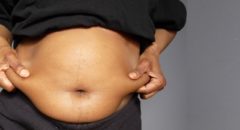buried somewhere on the list, but be sure to look for it. Try using products like Ms. Dash that do not include salt in the list of ingredients. Contrary to what some may believe, you do not have to compromise taste when switching to a low-sodium diet.
Because obesity is a leading factor in hypertension, we can’t ignore the proverbial elephant in the room: One’s dietary habits and exercise often go hand-in-hand.
Let’s Exercise
Everywhere we look, there tends to be an advertisement for a gym, workout equipment, or the newest fad or trend. Some of these may have monthly fees attached to them or they may be expensive; yet, there is a form of exercise that most of us can engage in that has amazing benefits and that’s walking. Yes, walking.
Although gym memberships are advantageous as are personal trainers and strength conditioning, walking can be a great first step for integrating exercise into your daily routine.
Think about the last time that you went to a mall or an entertainment complex. Where did you park? How much time did you circle the parking lot looking for the ideal space—close to the building? Something as simple as parking further away from the door or taking the stairs, instead of the elevator, can increase your heart rate and your overall blood circulation, which helps with hypertension.
If you have access to a park or a trail, consider adding 20 to 30 minutes of walking to your day. Too cold to walk outside? Try walking around your home. A great technique that will also help you integrate walking into your routine is walking in place during commercial breaks. Or, you may want to invest in a treadmill at home. If walking is not rigorous enough for you, look into other methods of exercising including circuit training, running and/or jogging.
RELATED: 7 Simple Ways To Naturally Lower High Blood Pressure
Lifestyle Choices
Lifestyle choices at home and at work can also help you address hypertension. One of the most immediate things that you can do is invest in a high-quality blood pressure monitor that you can use at home. Because these vary by manufacturer and sometimes the readings are slightly off, ask your doctor if you can bring your home monitor to your next appointment with you.
He/she can check the reading on your device and compare it to their reading to see if your machine is accurate and within range. Being able to monitor your blood pressure at home is critical to your well-being and it allows you to stay informed.
During your leisure time, instead of meeting friends for dinner and a movie, take a cooking class or host one at your home. If cooking is not in your wheelhouse, see if one of the local community colleges offers culinary classes for the public. Also, think about your alcoholic drinking habits—do you really need that second shot of tequila in your strawberry margarita? Surprisingly, drinking alcohol, like smoking, can contribute to hypertension, so consume it in moderation, if at all.
Home is not the only place where we need to think about how our actions affect our health. With many of us now working from desks and sitting in front of computer screens for extended periods of time, Americans now have a more sedentary lifestyle. If you can, try standing up or even asking your employer to secure a standing desk for you. Use your lunch hour and breaks to get some exercise. If you travel for work, be sure to get up, as permitted, while traveling.
RELATED: 9 Quick Ways To Get Rid Of High Blood Pressure (Without Medication)
You are not Alone
Trying to tackle hypertension alone may be difficult, so if you need accountability, seek the help of your friends. Check with your network to see if anyone is a registered dietitian or a health advocate. Some hospitals will even offer support groups or community health classes and events. There are even many amazing health-themed virtual communities for those who prefer to go the social media route.
Whatever decision you make about tackling hypertension, the key is to be informed and to take action. In some instances, a person may have a predisposition to hypertension due to one’s family history. Medications such as diuretics and beta-blockers may be the best course of action as determined by a medical doctor. Yet, even with prescribed medication, it is important that you still learn as much as you can about hypertension and how it affects your body.
Hypertension does not have to be a silent killer. The more we know, the more we can address it and its residual effects. You may not be ready to run a marathon, but every step you take towards making a commitment to your health is a step towards a better version of yourself.

Tyra Seldon, Ph.D. is a former English professor turned writer, editor and small business owner. Passionate about the English language and the craft of storytelling, she launched Seldon Writing Group, LLC in 2011. Dr. Seldon has worked with education tech companies, celebrities, aspiring writers, entrepreneurs, media outlets, Fortune 500 companies, and government agencies to develop their written content. When she’s not writing, she’s traveling the world, one continent at a time. She can be reached at [email protected]
FB: @seldonwriting
IG: @tyraseldon









